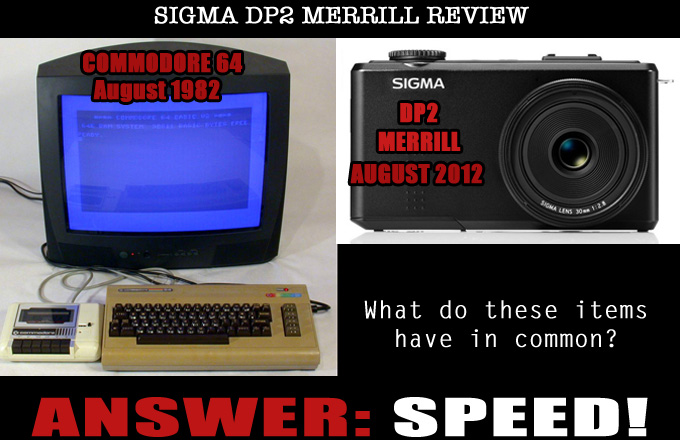
The Sigma DP2 Merrill Review- Gorgeous image quality, slow as molasses and irritating squeaky operation!
The Sigma Dp2 Merrill has been in my possession for a while but it is going back. In other words, I am not going to purchase it. But not because of the image quality. Before I even write one more paragraph I have to say that the image quality of this camera is flat-out amazing when shooting at low ISO with good light. I found it better than the Leica X2, Sony NEX-7, or just about any other comparable camera I have shot with in recent times. Using a 46 Megapixel Foveon Sensor, this Sigma DP2 Merrill is the 1st “DP” model I have seriously considered purchasing. With its 30mm f/2.8 lens that is razor-sharp giving you a 45mm f/2.8 equivalent, it is a perfect match to the sensor inside. Sigma also has a DP1 Merrill coming that will feature the same insides but with a 19mm f/2.8 lens giving us a 28mm equivalent.
This is a pretty extreme crop from a RAW file processed with the Sigma Photo Pro software…
The incredible IQ of the 46 MP Foveon Sensor
FACT: The IQ from the Sigma DP2 Merrill and its 46 Megapixel Foveon Sensor is GORGEOUS, RICH, and with SUPERB COLOR. The files are loaded with detail, and I am just talking about JPEGS! In fact, I have never seen such good JPEGS before and the RAW files take it up another notch with more detail and richness. The Sigma goodness you have heard about is true..when it comes to flat out image quality.
[ad#Adsense Blog Sq Embed Image]
This review will feature images with the DP2 Merrill shot in JPEG and RAW.The JPEG’s rock and the RAW’s roll so either way it is all good. Sigma knows it’s stuff when it comes to Sensor design. In fact the IQ from this camera is much better than my capabilities as a photographer.
The Foveon Sensor Technology as used in this camera was developed by Dick Merrill who passed away in 2008. Today Sigma continues his research and has dedicated this DP2 model to him just as they did in their flagship DSLR the “SD1”. Sigma has MANY fans of this sensor technology and also many who dislike the sensor. With cameras that have always been uninspiring to use, the DP series has never made it to huge sales and success but rather is in use by dedicated fans of the brand and the Foveon sensor technology. I have seen some amazing photographers use the DP series with impressive results and while they may never take over the mainstream buyers, Sigma has the best sensor I have ever come across in almost..almost any 35mm digital camera and the lens in the DP2 Merrill is also outsanding.
The DP2 has a nice smooth rendering and even in full harsh AZ sun (as in the image below) we get a nice Dynamic Range and tones. Shot as a JPEG. This girl was singing for a quart of oil. Her and her BF were dead broke and their car leaked out all of the oil while traveling to Texas. A man came by and gave them $5 and they went in to buy the Oil. I asked for their picture and gave them $5 for some water, which they went in to buy immediately. To be young and adventurous again…
Here is what Sigma has to say about the lens built into the DP2 Merrill:
“The camera is compact and lightweight, and include “F” Low Dispersion (FLD) glass to correct aberrations and Super Multi Layer Coating to reduce flare and ghosting. With the 46-megapixel, full-color Foveon X3 Direct Image Sensor, the new DP cameras capture all primary RGB colors at each pixel location with three layers, which results in incredibly detailed images with a three-dimensional feel.”
I agree with what they say above 100%. Notice they do not say anything about fast focus, fast operation, etc. 🙂
–
The Sigma DP Series..great image quality but slowwwwwwww ( I know, I know..I keep saying this)
I reviewed the old DP1 years ago when it was launched and enjoyed the IQ but did not enjoy the teeny files and low resolution. I said back then that if Sigma could do this with a large megapixel Foveon then it would be a camera to seriously consider even with the slow as a turtle focusing and writing to the card. But that was 3 years ago so I assumed that with this special $1000 DP2 Merrill that Sigma would have sped up the feel and operation of the camera. I assumed that I would no longer have to sit there and wait for the AF to lock or the files to write to the card. Wrong. It is pretty slow when you compare it to the cameras that are out today. My little Sony RX100 is blazing fast with AF..the DP2 is very slow in comparison.
BUT it is not horrible. You can still take it out and shoot though you will not get any spontaneous moments. The image below was supposed to be of this dog licking a boys face but by the time the camera focus and fired the boy had moved away and the dog already pulled back. Even so, I ended up with a cute dog pic 🙂
You can get an idea of the camera operation if you take a look at the video review I did below. You can also see the AutoFocus Squeak I have going on in this specific camera as well as the write times….why is it that Sigma cannot attain the level of AF speed that modern cameras in this price range deliver? Why is my sample squeaking when it focuses and why is the write time so slow? It seems to me that at this price point Sigma could have beefed up the processing and had some better quality control.
So to be clear and to sum it up…The AF is slow, the write time is slow, my camera squeaks and it retains that special “Sigma” usability factor, which is slow and sluggish. It hunts in low light when you try to AutoFocus and the high ISO is not the best by any means. This is more of a low/base ISO camera IMO.
With that said, I can not argue or complain in the slightest with the IQ. It is beautiful, and I am talking about out of camera JPEGS as well as RAW here. It seems Sigma did get this right as well as white balance, sharpness, detail, and everything where it REALLY matters, the final output of the images.
Rich JPEGS right from camera. Dynamic Range again, is superb. Color is great and the detail and subtleties are wonderful. The DP2 Merrill delivers in the IQ department no doubt. This is their best sensor to date.
–
So just how good are the OOC JPEGS and the RAW files?
Like I said earlier…I shot all images in JPEG and RAW but since Adobe does not support the RAW files from the Sigma I had to download and install Sigmas Photo Pro software which while better than the Sony software that they supply with their cameras is still a bit slow and cumbersome (and crashed about 6 times on my iMac). I had to use it though as it’s the best way to process the RAW files from the DP2 Merrill, and it works great giving superb detail and color.
Below are a few shots that you can click on and open up a larger version with a full 100% crop embedded into the photo. YOU MUST click it to see the full crop and the detail. The 1st two are shot in RAW and then I will post up a comparison between the JPEG and RAW versions…
These 1st two shots are converted from the DP2 Merrill’s RAW file – click them for larger and full size 100% crop
–
and now a comparison between the JPEG and RAW files with crops…
JPEG
If you click on the JPEG image below you can see it gives us really good detail and tones…
–
RAW
…but click on the RAW conversion and you will see MUCH better detail and tonality…RAW takes it up another notch for sure.
–
and one more…
JPEG
same as before – good color and sharp
–
RAW
MUCH more detail – almost too much…and I prefer the JPEG color in this image but it does show how much more detail can be pulled from a RAW file.
–
The Build, Design and Feel
The build of the DP2 Merrill is very good. In my hand it feel solid, simple and well, brick like. It is shaped like a brick with a few buttons and a dial attached. It doesn’t have a blingy look, fancy features or anything special about its design. Compared to a Leica X2 it appears very plain, which many will love. My best friend thinks the design is perfect. I think it is a little bit dull and industrial but the design is not what we buy a camera for. We buy a camera to use it to create memories and capture life so as long as it captures the image I frame that should be all that matters. The camera has a metal body and construction and feels good but very blocky.
So all in all I have no complaints with the build quality or design. It is what it is, a Sigma DP series camera. The special part of this is the Sensor and the quality output, especially for the size. It is not a “pocket” camera any ANY means but it is not anything close to DSLR size either. It is more along the lines of a Leica X2 size wise.
The image below of my Son Brandon was shot in JPEG and converted to B&W using Alien Skin Exposure 3 – the DP2 Merrill has a fantastic lens that performs well even wide open.
High ISO performance at 100-1600 ISO
The high ISO of the DP2 Merrill is not the cameras strong point. To see the beauty and quality from this camera you MUST shoot at low ISO in good light. Period. This is not a quick point and shoot camera to take of your children running around the house at ISO 1600. If you try this you will be highly disappointed. The DP2 Merrill is for “the patient photographer” – much like a Leica M shooter. Frame, compose, set, focus and shoot instead of “lift and fire away”.
Below are some high ISO crops to show you ISO 100-1600 for those who want to see what to expect in low light.
So bottom line on ISO and the DP2 Merrill? It is not horribly bad but it is nowhere near the better comparable price range cameras. My suggestion is to keep the DP2 to good light and low ISO and you will be extremely pleased with the output. If one thing has stayed the same with the Sigma DP series it is that the camera still lacks in comparison to other cameras where ISO is concerned.
DETAIL!!
The DP2 Merrill can do a few things VERY well. One of them is to reward you with gobs of detail in the files, and I am not talking about harsh detail either. Some CCD and CMOS cameras will give you detail but when viewed at 100% there is smearing, jagged edges or not so detailed details. While they do a fantastic job the CMOS Foveon sensor in this DP2 is pretty special. The lens on the DP2 Merrill is fantastic. It is sharp corner to corner, has pleasant Bokeh and is pretty much free from any serious or visible distortion (in my real world use anyway).
Want detail? The DP2 Merrill can give it to you! Click image below for full size file from RAW and view at 100%.
–
Here is a shot taken in JPEG mode with a 100% crop from JPEG – click on the crop to see it 100% full size – impressive for an OOC JPEG huh?
Sigma hit it out of the park with the 46 MP sensor because we finally have that Foveon look, Foveon color and Foveon detail with much more resolution than previous DP series cameras. Sweet! This is great news for fans of these sensors. FINALLY a camera for Foveon fans to be excited about.
–
Other features of the DP2 Merrill
This camera is not about all of the fancy features that many camera companies are stuffing into their cameras these days. You will not find any HD Video, you will not find any 5-Axis (or any) Image Stabilization and you will not even get a tilt screen or EVF/VF of any kind. There will be no self portrait mode, no panorama mode and no WiFi built in. What you will get with the DP2 Merrill is a simply designed basic camera that excels at one thing, all out image quality.
The camera can shoot video but I wouldn’t recommend it. The camera also does time-lapse with its time lapse mode, which I am surprised they included seeing that other than that the camera is pretty plain jane. No art filters or photo effects are included either.
The DP2 Merrill is made for a select group of photographers. Those who want this camera KNOW they want this camera and they know about and accept the limitations of speed. You buy this one for its image quality and size and nothing more.
–
The Pro’s and Cons of the Sigma DP2 Merrill
PROS
- The image quality and sensor are beautiful – in the right hands there could be some astounding photos taken with this camera
- The build is solid
- The layout and controls are simple
- The menu layout is easy to navigate and understand
- The color, detail, dynamic range and overall look of the files is impressive
- APS-C sized CMOS Foveon 46 Megapixel sensor provides tons of resolution..finally!
- 3D feel to the images, more so than any other camera I have used (besides full frame cameras like the M9, 5DII, D800, etc)
- One of the more “magical” compact cameras available today in regards to the luxurious IQ
- You can use manual focus using the dial on the lens and it works good
CONS
- A battery hog..which is why Sigma ships this with TWO batteries (you better get a 3rd)
- SLOW to Auto Focus
- My camera had an annoying squeak when focusing (see the video in this review for example)
- RAW files can not be opened with Adobe software so it’s Sigma Slow Photo Pro
- High ISO performance just average but this is a LOW ISO camera
- Too Expensive at $1000 – $700 would be better (though half the cost of a Leica X2 with better IQ, just seriously deficient in other areas)
- Write times to your SD card can take up to 18 seconds per image (see video for example) when shooting RAW or as little as 12 using super fast SD cards
Bottom Line Conclusion
I know I sort of made fun of the Sigma DP2 Merrill in the title photo comparing it to a 1982 Commodore 64 Computer system but in all reality this is a serious tool for those who are serious about image quality. Just be aware that with this gorgeous sensor comes a camera that is slow to AF, hunts in low light, has slow write times and is built like a brick, literally. Sigma has come a long way in regards to the sensor since the early DP cameras but they have inched along slowly when it comes to usability and speed.
My camera had an annoying as hell squeak when using the AF (see the video above to HEAR it) and I am not sure if others have this issue or if I had a bad one but just be on the look out for squeaky AF. If you encounter it then return the camera. Maybe mine was the only one with this issue, who knows…but I think I have a defect in this sample which tells me QC may not be up to snuff.
Basically no one would be disappointed with the Sigma DP2 Merrill Image Quality. No one. It has deep and rich color, superb dynamic range, gobs of detail and this time around has plenty of resolution as well with super large 50-60MB files.
The JPEGS are fantastic but the RAW files are even better and I feel that Sigma has a camera that many will love and some will hate. It can be frustrating to shoot anything that moves so it is NOT recommended as a point and shoot or if you are looking to take photos of your running kids or pets. It is not recommended for low light shooting indoor either. The DP2 Merrill excels with landscape and even portraits. If your subject is still and you have enough light the DP2 Merrill can handle it.
I had a love/hate with this camera but am still not comfortable enough with the operation speed and low light performance to buy one for myself. What I do know is that the image quality is the best I have seen from any small camera to date. It’s damn impressive and if I had this for a couple of months I am sure I could create some gorgeous photos with it. What you see in this review was basically a collection of snaps with the camera for the week and a half that I had it.
Not much else to say that I have not already said. It’s a simple camera and this is a cut and dry review. Astounding IQ capabilities with slow AF and operation. If it were $699-$799 I’d probably own one for those moments when I want light and high quality for landscape, buildings, or portraits. Oh, I almost forgot to mention that the files from this camera are VERY 3 Dimensional in their feel. I LOVE the rendering of this camera..period. Just wish it was a bit more responsive, if so then I would have bought it.
If you feel the this camera is for you then the DP2 Merrill can be bought for $999 from B&H Photo, my recommended dealer who I have purchased from for over 18 years!
B&H Photo Sigma DP2 Merrill Page
ALL I ASK! HELP ME TO KEEP THIS SITE GOING AND GROWING!! IT’S EASY TO HELP OUT & I CAN USE ALL THE HELP I CAN GET!
Remember, anytime you follow my links here and buy from B&H or AMAZON, this helps to keep my site going. If it was not for these links, there would be no way to fund this site, so I thank you in advance if you visit these links. I thank you more if you make a purchase! I have nifty search bars at the upper right of each page so you easily search for something at either store! I currently spend 10-14 hours a day working on this site and the only way that I can pay for it is with your help, so thank you! Currently my traffic has been increasing but my funds to pay for the site has been decreasing, so any help would be GREATLY appreciated!
Even if you buy baby food, napkins or toothpicks at amazon it helps this site, and you do not pay anything extra by using the links here. Again, you pay nothing extra by using my links, it is just a way to help support this site, so again, I thank you in advance ![]()
If you enjoyed this article/review, feel free to leave a comment at the bottom of this page and also be sure to join me on twitter or my new facebook fan page and Google + page! Also, you can subscribe to my feed at my subscribe page HERE and read these posts in your browser or news reader!




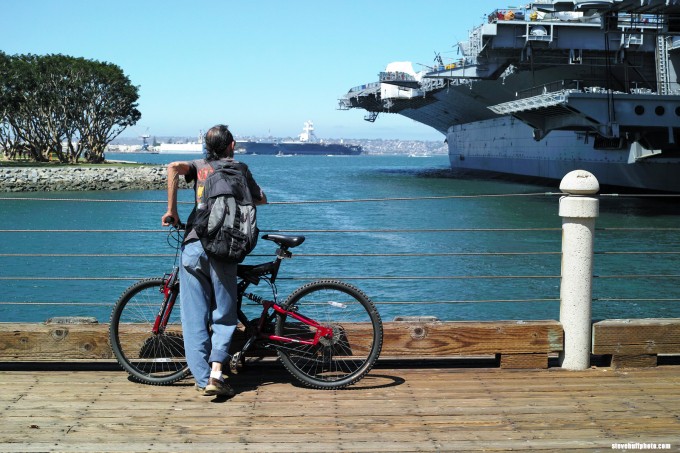
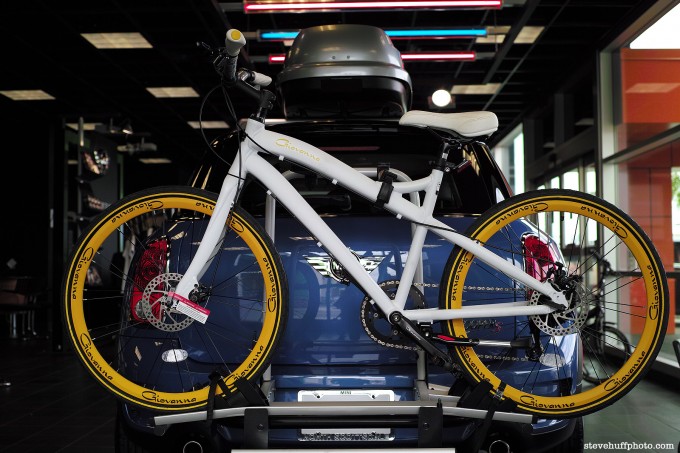


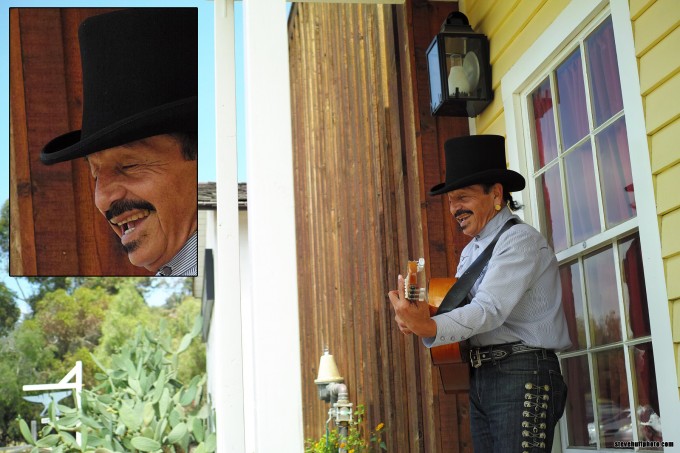
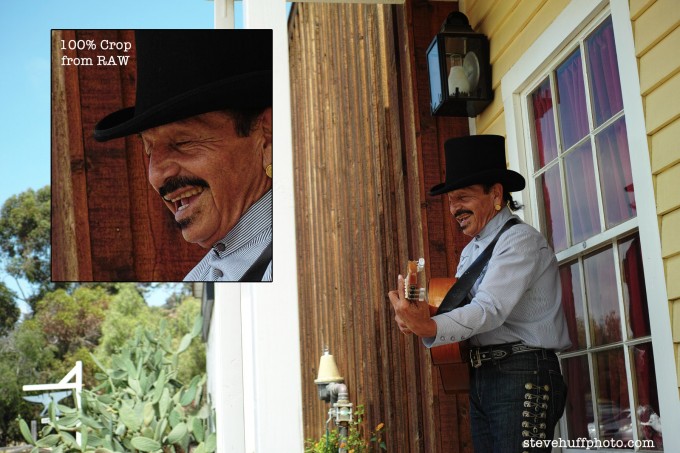
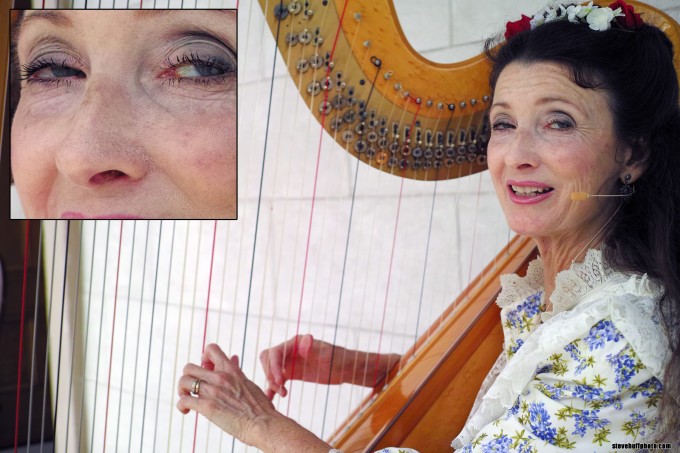
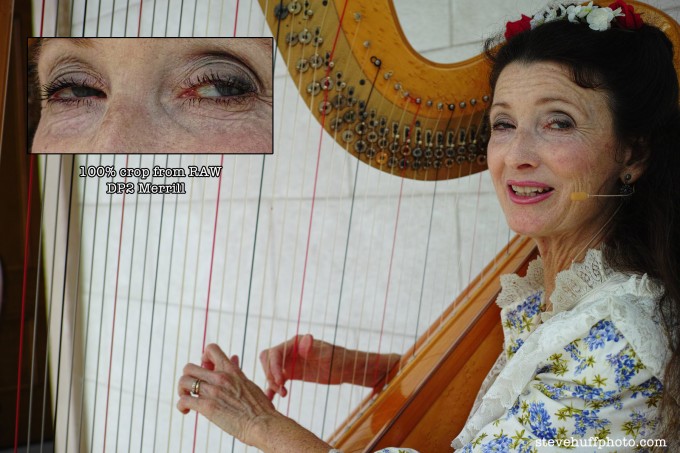
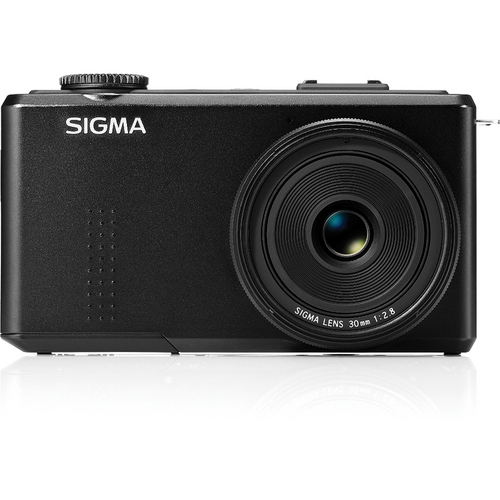

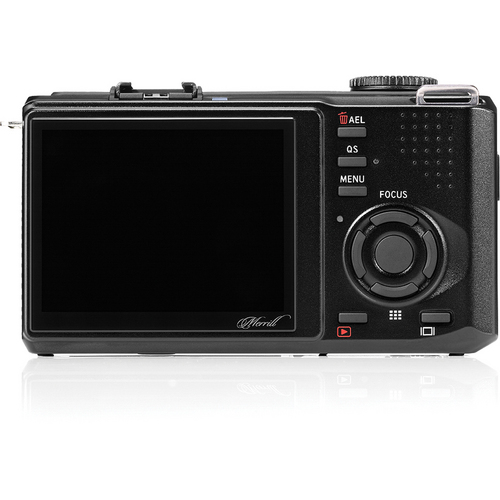

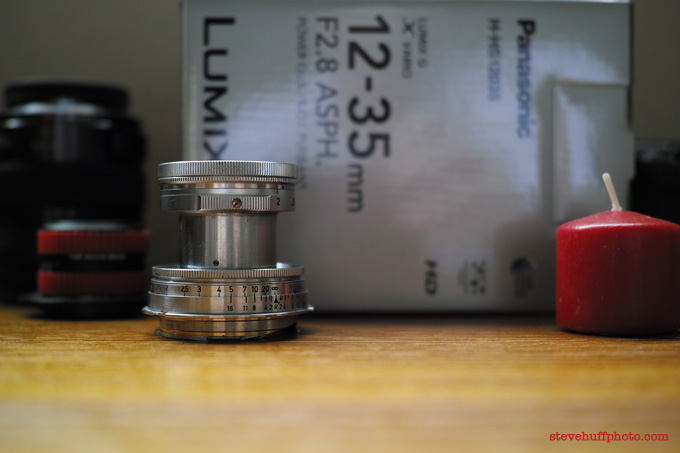


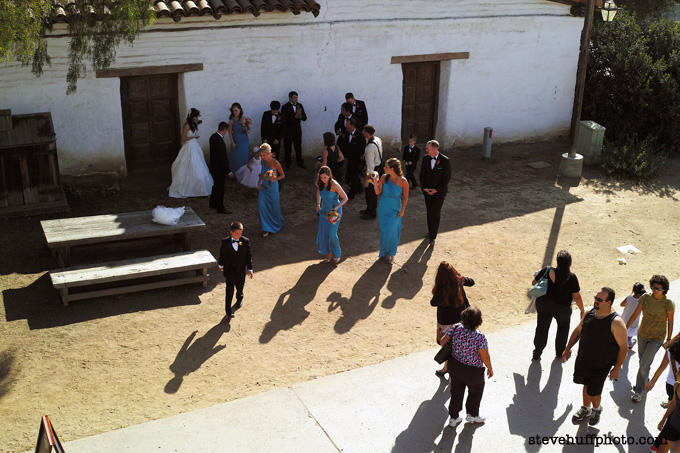
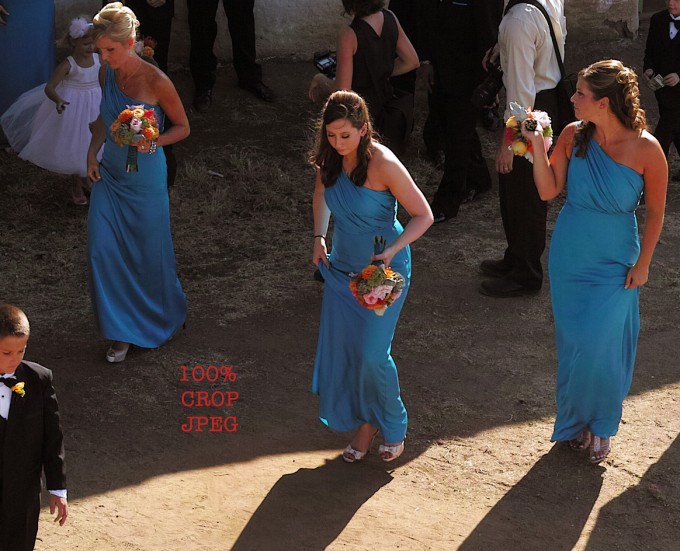


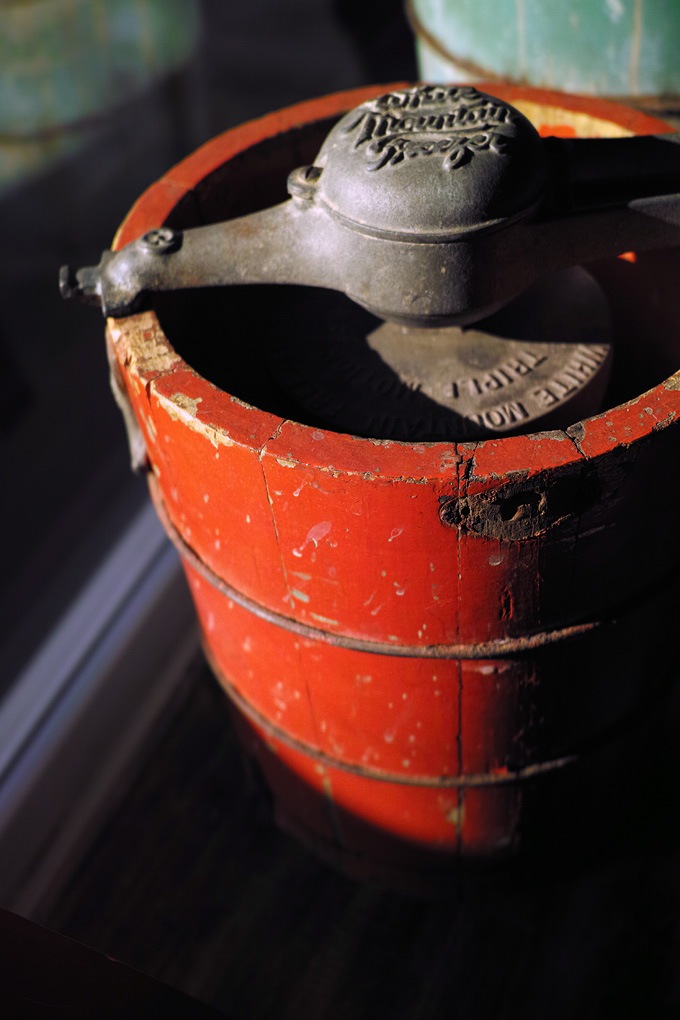
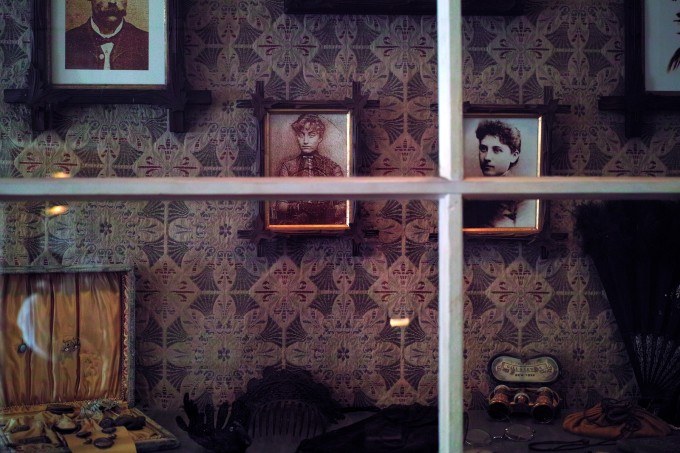

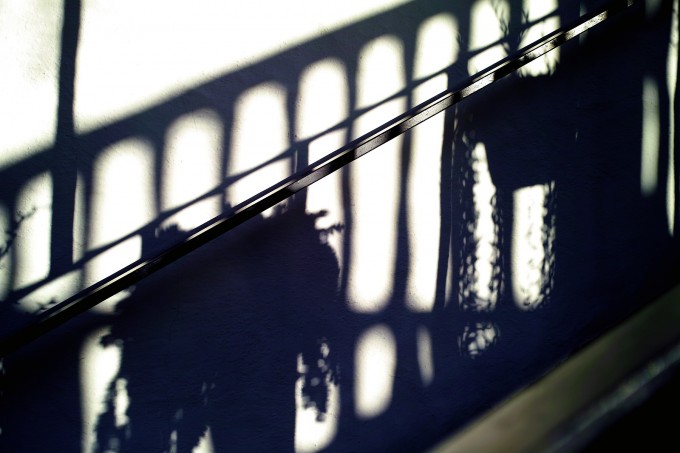
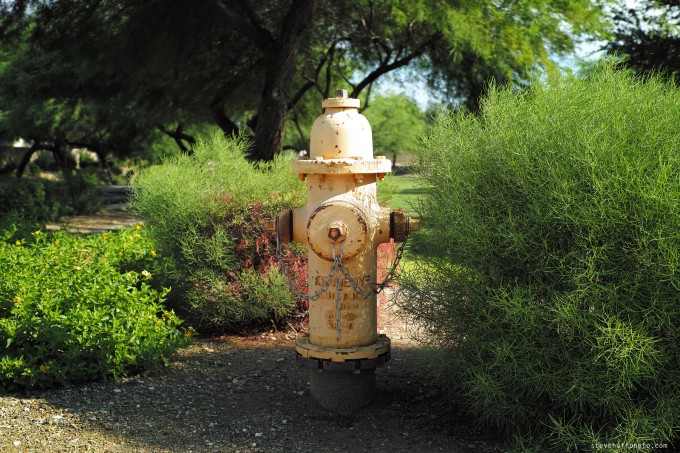

i am undecided between the dp1 and the dp2. can’t decide between the lenses. what advice would you give to help me decide?
Mmh, I guess you aren’t in the market any more.
However, I guess you mean DP1M and DP2M.
The difference is real! and it comes down to what you feel more comfortable with.
For me, the 45mm eqv. was the way to go.
Others prefere the much wider DP1M, but people said it is the least gorgeous lens in the DP Merrill series (with the DP3M having the most awesome lens…)
I don’t know about you, but I’d go with a Ricoh GR and the option to widen to 21mm…
I had the original dp2 and now the Merrill version. This camera is definitely my favorite camera…ever. The image quality has almost a spiritual quality, pure to the extreme. I have about 10 batteries and a lens hood. I’ve also done street shooting with it although it’s slow, but usable for many street situations, just not the fast stuff.
We are in 2015 now with winter coming on. How do the DP Merrills compare to the D810 and what is in the market now?
You say it is a camera for bright light shooting. How about tripod mounted in dim interiors – just the way I use the view camera? Am used to longer exposures. Not a problem. Does the DP2 hold up in image quality shooting in these conditions?
Longer exposures would give you quite a but of noise. These are not low light cameras, at all. The sensor is amazing when you have light and only shoot stationary subjects.
Hi! Great review, I’m in love with this camera, yesterday i bought one. I would like to use my filters with an adaptor but i didn’t found anything, I know there are 52mm adapter filter to Sigma dp1 and dp2 but there are to Merril? I gess the dp1/dp2 adapters are not working with merrill, they are? Do you use one?
Regards
I have the Sigma DP2 M and really love the quality of the images it produces. I shoot it like I shoot my Hasselblad 500. Slow paced and on a tripod if need be. I stick to 100iso or 200iso but even at 800iso the image holds together. Focus is fine for this speed of photography and the manual focus override works great via the lens ring.
I have compared the files next to my M9 and 50mm Summilux ASPH. There is more details OOC from the Sigma but not much more.
I find you can take a picture of a dog poo and the M9 will make it look beautiful. The Sigma however simple records the scene as is but in massive amounts of detail.
The main reason I got the DP2M is for its look. Reminds me of film. Other digital cameras can look like film but not often straight OOC. There is a luminosity of slide film with a saturation of colours that reminds me of the little Russian Lomo camera. A very unique camera.
Let me ask this, and I have the original dp2 and love it. is the Merrill slower than my dp2? Does it perform at about that speed as far as loading raws and focus, thanks
No, the Merrill is faster. Handling is also better. It uses longer time to write the files to the card (they are 3 times the DP2 files) but you have a 7 photo buffer and you can change settings and take new photos while the camera is writing to the card which you cannot with the DP2.
Having bought one 7 days ago, and only really had chance to take it out a few days back i can honestly say the picture quality just leaves me speechless. The corner sharpness is just mindblowing!! Have now bought a flash so i can take shots in low light but at a decent speed.
All the doommongers out there just dont seem to understand that this camera is ‘pure’, in that it does exactly what a camera should do, and that is take astonishingly crisp pictures. It makes cropping an absolute joy too.
AF is perfectly fine, and as I rarely shoot above ISO200 anyway there aint no problem. Stick it on a gorillapod and hey presto, you can even do slow shutter speeds.
Yes, i am ever so pleased i bought this camera. I was considering the Fuji XE1, but so glad i took another look at the Sigma.
I too also mentioned the ‘contemplative’ approach to photography this camera engenders in the user. It’s almost zen-like if thats not too strong a statement. but when you are capturing ‘perfection’ then i think its important to take one’s time and immerse oneself in the experience.
Cant wait for a decent shooting day here in the UK.
PS: mine dont squeak either.
This is the first camera that I am now thinking about using instead of my 4X5 view camera for color or black and white. Slow kludgy forces contemplation makes you think about what you are shooting and delivers superior images to anything out there. That about says it all.
I just used the Sigma DP2 as my sole camera on a trip to Panama in December.
You can find sample images here:
http://www.flickr.com/photos/alistairhenning/sets/72157632463296789/with/8359985036/
Having used the camera extensively by now, I can say for certain that Steve was testing an inferior unit to what’s shipping now.
My camera certainly does not squeak; in fact it is virtually silent in operation (including shutter sound, which is a ‘click’ that’s inaudible in the field).
Moreover, focusing is as fast as it needs to be for candid/street photos. In practical terms, I find the speed when I switch to ‘focus priority’ mode fully on par with models like the Sony NEX-7 if not quite at reputed OM-D speeds.
Of course, RAW OOC image quality leaves all these cameras (in fact, all other APS-C sized sensors) in the dust.
It used to be, you had to be ultra patient and really committed to Foveon to use Sigma DP cameras; not any more. I can’t recommend the new DP Merrills highly enough for any photographer whose primary focus is image quality.
Hi Steve
great review. Is the photo of the aircraft carrier with the bicycle in front an out of camera jpeg or a processed RAW-file?
I’ve seen lots of pictures from the DP2m now and I always wonder, if that really great dynamic range is created by this camera or by increasing the shadow detail from the RAW file.
Thanks, keep going with this brilliant website.
Sebastian
Steve’s the best – but I think he should give the DP2 Merrill a second chance; some of these files really are amazing. This lady eats batteries – yes, but the camera is nice to operate and not terribly slow in my opinion.
http://forums.dpreview.com/files/t/cf7560c60e8d4db38e8f28cb9bf57b12
It all comes down to money. To try again I have to buy one. If I do not gel with it I have to sell it..at a huge loss. I love the files from this camera..gorgeous at low ISO but not sure I could deal with the slowness and lack of light light ability for what I do. For good light the files are pretty much best I have seen by a mile for a small camera and beats many large ones as well.
I want one – for methodical shooting. I agree it would be nice to have a few features like a viewfinder but there is no perfect camera and the image quality makes it worthwhile for subjects that it suits. Coming from kodachrome days I do not have a problem with the Low ISO!
Even up to the previous generation of Sigma DP cameras, the competition (especially the Fuji X-Pro1) bested the Sigma in usability if not in image quality. With the DP Merrill cameras, this has changed.
I’m a huge fan of Steve’s website, and Steve’s reviews are a lot of fun.
His version of the DP2 Merrill does not meet the standards of the version I received from DigitalRev http://www.digitalrev.com
Sigma has released new firmware which increases focus speed to the point where it equals my Fuji X-Pro1. It may not be quite as fast as the OM-D EM-5 (which I haven’t tried yet understand to be currently “class leading”. However, it is fast enough that as a working event photographer I have yet to miss a shot because of focus issues.
Although both lack anti-aliasing filters, the DP2 Merrill also wins in terms of image detail. Check out this comparison for proof (arguably the Fuji’s color is better, but blow the JPEGs up by 5x or more and the Sigma wins hands-down). http://www.outbackphoto.net/news/2012/9/27/experience-the-sigma-dp2-merrill-resolution.html
Since someone asked about manual focus, it is actually pretty good – at least as good as the Fuji X-Pro1 or any other camera without focus peaking. (Sony is still king in this area, although the IQ of the NEX-7 is not remotely in the same ballpark as either the X-Pro1 or the DP2 Merrill, in my direct experience).
Write time is also less of an issue than Steve’s review makes it seem. You can continue to shoot and change all settings while the buffer is writing to the card, the buffer accommodates 7 RAW images (which is plenty, in my experience as a working event photographer), and with a fast card the total write time does not subjectively seem to exceed that of other mirrorless cameras I have tried recently even though RAW image files are ~45MB with amazing detail.
Based on the reviews I was able to find online, and even my past experience with previous Sigma DP cameras, I was skeptical. But having tried the Sigma DP2 Merrill, I can say that in terms of image quality and usability (and price – street is finally <US$1,000!), Sigma finally have a winner on their hands.
http://www.AlistairHenning.com
(I am not associated with Sigma or DigitalRev in any way other than as a retail consumer).
have look at this image (orginal size) to see what the DP2M is capable of:
http://www.pbase.com/ianvermeer/image/146003874
it is astonishing!!
I feel the linked file is way over sharpened, the edges are almost sketch like…
Because you are apparently accustomed to looking at CFA images which have soft edges. Foveon edges are naturally sharp – rarely is “any” sharpening needed and the images you are looking at was taken hand-held out the window of an airplane. The photographer who posted it is a master photographer who is known world-wide for amazing images from Foveon based Sigma cameras. Sharpening appearance will vary depending on your display device. Prints are absolutely fantastic….
With zone focusing I think HCB would have adored this camera on his daily constitutionals in Paris.
Sigma has just release a firmware upgrade (1.01) that makes the AF much faster and also greatly improves AF in low light.
you can get it here:
http://www.sigma-dp.com/download/dp2m-firmware.html
Did you try various contrast settings? This feature is missing from most cameras, and can be extremely useful in the wide dynamic ranges of many real-world situations.
Not one production DP1 Merrill is out there yet, and by the time it becomes available, Sigma will face tough competition from Sony RX1 which has one stop faster Zeiss-Sony lens and FF sensor with a similar equivalent focal length and smaller body.
Incorrect, some users in SIngapore have the DP-1M already:
http://forums.dpreview.com/forums/read.asp?forum=1027&message=42441792
Where is the Sony RX-1? What resolution will it have? Will it really be able to meet the resolution and quality of the DP camera lenses? The DP-1M’s are shipping, seems like the RX1 will be the one facing tough competition.
Not to mention, the RX1 is almost three times the price…
Yes! I can testify to that. I’m from Singapore and we’re already getting the DP1M, albeit in limited quantity. I’ve also gotten the close up adaptor AML-2 for DP2M! And to top it all off, both the DP1M and DP2M come with the Sigma EF-140 DG flash free of charge! The free flash promotion is only for a period of time only though.
Hi Steve , your totally awesome, love your website and you tube channel. I am currently looking for a camera to take pics of my tattoo work and a bit of portrait and landscape. Image quality is deffinately on the top priory list. I’d like to spend about $1000 abit more or less if needed. Been considering this camera just after seeing your you tube. Which camera would you recommend besides this. I live in ny and most likely be buying at bh. Do you know if I go there and tell them I’m a supporter would it help your
website or do I have to buy through your site to support it. Thanks your supper awesome.
Well the DP2M would be great for tattoo detail as long as you are shooting in good light and low ISO. But would be best to try it in person at the shop. Also look at the Fuji X100. At f/4 it would render tattoo work in a really nice way. Just about any modern camera with a larger sensor can do the job. Thanks!
http://www.flickr.com/groups/dpmerrill/pool/
look at these pictures, there is nothing more to say, quality is astonishing!
I can understand the non-users’ reactions to the review to some extent, considering how the review is written, but I remain deeply puzzled about the pricing issue. Such as $800 ($799 or such) would be ok, but $1,000 is too much?
First, is this a tool or a toy? If it’s a tool then it has to earn its way, and if it’s worth it then you have to buy it, if it is the tool for the job. That’s easy. How long does it take for a tool to justify its cost? Three years? Then we are talking abou $67 per year. Is that really significant?
Second, the toy concept: you either want those images or you do not. If you do, how long will you keep the camera? Three years? Then, again, it’s $67 per year compared to some $800 (mythical) camera.
Just how big a deal is that extra $200? Sure it is a big deal if you don’t have the money, but is that really the case?
I am going to do a follow up to this review with a more long term use of the camera. After using it more AFTER this review I realized the price is actually decent if you know what you are getting. At $1000 most will not buy a “Sigma” DP camera due to the reputation of looks, slow operation and AF, etc. Most would buy something else for that money but at $1000 no other camera out there will come close to matching the IQ of the little DP2M. So with that said, $1000 is actually a good price – IF and only IF you value IQ over everything else and want to shoot still life or still subjects in good light. It does have limited use and can not be an everyday ONLY camera for someone. If you value IQ and usability then $1000 is not such a good deal. To some this will be the best deal they have gotten in a camera and to others it will not be. Many will buy this and get frustrated with the speed but it is important to let everyone know this camera (much like the old Leica X1) can not be used as a sole do everything camera. It is just too slow.
Landscape
Portrait
Still Life
These three things and in good light… DP2M is excellent. Anything else it is not so excellent. So it is a $1000 limited use camera.
The Leica X2 at $2000 is also not the best deal but it can shoot at night and has faster AF and also has great IQ and has the Leica name and design that so many lust after so it is more desirable to more people. Sigma DP2M is a niche tool and like I said elsewhere, I am already addicted to the IQ and want more time with the camera.
today its only around $550…bargain of the century
http://www.luminous-landscape.com/reviews/cameras/sigma_dp2m_review.shtml
Medium Format Image Quality In a Pocket Sized Camera
vs M9 & 50mm Lux
DP2M has more subtleties, dimensionality, tonal range.
Steve, did you find out if that squeaky noise from the lens focusing was because it was a faulty unit or is that how all of them are? Thanks.
It was a defective unit.
Fascinated by this camera! This review is way too long, yackety yack for the first five minutes.. time would have been better spent demonstrating different focusing efforts which apparently is its weak point. The camera can be used while it’s writing and you’re probably not using a fast card, I shoot with 90mb/s cards in all my cameras so that’s not a big deal. I wouldn’t be using this for action anyway because of the fixed focal length, the focusing speed wasn’t blazing fast like my V1 but from what this video shows it is certainly usable, I didn’t see any sign of hunting.
Steve this is my first comment on your site. You do a really great job and I want to thank you for being different with your approach and attitude towards photography and camera gear. You keep things fun!
This review is great and I think this image quality is superb and very unique. The only thing about the review that is puzzling to me is when you bring up $1000 price and the value of this camera.
Seems to me it is a screaming bargain since $1000 is below the prices for many good lenses on Nex, Olympus, Ricoh GXR, Leica, etc.
Thanks for all your hard work. I will be ordering this camera using your B&H link this week. I read your site each day and love the daily inspirations as well as your previews and reviews.
Happy Labor Day!
They make great secondary cameras … to be used when the situation is just right. For instance Landscape photographers will very well be able to deal with the slow camera. And yes it’s a pity that none of the big camera manufacturers has settled for the foveon technology ….
Just adding that the size of the focus points can be changed (3 sizes). I like to use the smallest size.
On the high ISOs- using RAW LOW will reduce some of the noise at the expense of dimensions.
Sharp shots are possible at 1/30 with the DP2M- original DP2 for me was around 1/60 but more like 1/80.
Setting up different custom modes is handy too.
http://forums.dpreview.com/forums/readflat.asp?forum=1027&thread=42378438&message=latest
exif on the post processing of DP1M sample images
rather aggressive on some sliders leading to banding in the sky shot
DP1M, DP2M, SD1M all prefer conservative processing
(eg sharpness in sigma photo pro set to -2).
On that dpr thread an experienced Sigma photographer writes
“Now we really do need to get samples from people who have had more experience processing Sigma/Foveon pictures using SPP than I expect this photographer has had”
“Fill Light at 1.1? We all played with Fill Light when it first came out, but I and others very quickly realized it had to be used cautiously. Now I never go over +0.3″
” And using Flash White Balance for a landscape will most likely create such odd colors”
Steve, have you tried the viewfinder that Sigma sells for these cameras…i would like to know about the experience, incase you get one. What will be most interesting to know is weather DPs have a way to turn off the monitor, so that one can work with the viewfinder and get better battery life. Also, do they match the POV of the cameras they are meant for.
I am also interested in knowing if one can remote trigger these…because it looks like a good choice for landscape work.
Because they have a peculiar way of seeing color, and the color resolution is fantastic (there’s no guessing/interpolation involved), they can be interesting for black and white work also. It will be nice if you touch upon this, especially vis a vis the LMonochrome.
best,
anurag
No I have not but may soon.
The button on the bottom right toggles the display modes – one of them is LCD off. It turns back on briefly if you change settings and then reverts to off (and also displays previews if you have that enabled).
No means of remote trigger except the old manual ways, but for landscapes I use the 2/10 second timers to eliminate camera shake when on a tripod.
You are right about them being good for black & white work, because they are good at seeing subtle shifts in tones that also translates to nice B&W conversion from the color image. There is a Monochrome white balance you can select but I always prefer to adjust color channels for a B&W conversion.
http://www.sigma-dp.com/DP1Merrill/jp/samplephoto.html
DP1M sample photos
corner to corner look as sharp as DP2M lens
Me esp likey (DP1M samples)
http://www.sigma-dp.com/DP1Merrill/samplephoto/SDIM1654.jpg
http://www.sigma-dp.com/DP1Merrill/samplephoto/SDIM1102.jpg
http://www.sigma-dp.com/DP1Merrill/samplephoto/SDIM1046.jpg
http://www.sigma-dp.com/DP1Merrill/samplephoto/SDIM0939.jpg
This camera looks great with the 28mm lens. I think I am getting a little addicted to the IQ of this camera…wouldnt be surprised if I end up with both of these when it is all said and done. Thx for posting the samples.
Steve, I disagree a little with your statement that DPM beats X2 in IQ, :
DPMs seem to be great for landscape and architecture, but not for portraits! That is, if you don’t like HDR looking portraits. The way the little Elmarit renders skin tones in Raw is second to none.
Regards
Hello Lin,
This is only because you have seen bad examples out of this camera. DP2m is an awesome portrait camera, especially in B&W but also in colour. All depend of the pp skills of the operator.
Kind Regards.
welcome homie 🙂
Steve wrote “I think I am getting a little addicted to the IQ of this camera…wouldnt be surprised if I end up with both of these when it is all said and done. Thx for posting the samples.”
Just been clearing out my photo hard drive of discarded photos.
Only ones I keep even if they are poor are from DP1 just for the IQ.
I keep going back to them and saying aaaaaaah.
I know this is pedantic, but a 30mm f/2.8 with 1.5 crop factor is a 45mm f/4.2 equivalent. Seems even dpreview has figured this out recently and have started publishing equiv apertures as well as focal lengths in their reviews.
Yes but that is not the whole story. It is when it comes to Depth of Field but not light gathering. This lens is a 2.8 aperture lens and still has the light gathering of a 2.8 lens. As far as DOF, it is more like a an f/4 but in regards to light sucking power, it remains a 2.8.
Short answer response: you are forgetting ISO, that SNR is impacted by different sensor sizes and exactly offsets “light sucking ability” of wider apertures on smaller sensors.
Longer response: I know what you are saying Steve, but for an image you don’t see “light sucking ability”. You can’t see “aperture” in a photo either, but you can see the DOF. You can’t see focal length in a photo, only the FOV. You can’t see ISO in a picture either, only noise (or absence of it) and DR (or lack of it).
Focal length -> field of view
Aperture -> depth of field
ISO -> SNR/DR
What I’m getting at is f/2.8 is equivalent to f/4.2 as aperture affects DOF in an image. If you want to look at the whole exposure triangle then the following 2 exposures are equivalent:
1.5 crop exposure: 1/100, 30mm, f/2.8, ISO100
FF equiv exposure : 1/100, 45mm, f/4.2, ISO230 (ish)
This is the same exposure and results in theoretically the same image (same DOF, FOV, noise level). Photos from these 2 camera systems would be indistinguishable (in terms of DOF, FOV, noise, etc) given same sensor tech.
There is no “light sucking” advantage as it is offset by the larger sensor resulting in better SNR & DR. The larger sensor camera system can stop down to match the bigger DOF, and pump up ISO to higher levels and yet match the noise level.
I can’t shoot hand held slower than 1/30. If you look at shots taken at night by LX7 at f/1.5, ISO 400 with large DoF you’ll know what I mean. Have a look at this, would you be able to take this shot with a FF camera at f/1.5 with the corresponding focal length? I can’t and I would love to. That’s where the advantage of having that light sucking ability matters.
http://www.flickr.com/photos/minami/7906524136/
The FF equiv is ~ 1/30, f/8.2, 28mm, ISO12800. I’m not following you why this is not possible with a FF? Did you understand my previous post?
f/7.5 not f/8.2.
I wonder if its possible for Olympus to get a hold of this sensor.
These images look great.
Someday, hopefully soon, I’ll get my hands on a DP1 and use the glorious sensor to take beautiful shots of the landscape.
Steve, could you comment on how the DP2M supports zone focusing?
This is more interesting with the DP1M which has just been announced because of the shorter focal lenght, but I doubt the interface on the DP1M is going to be any different.
On the old DP1 is was very easy to set it up for zone focusing which is awesome for street shooting/snapshots, but it had the focus wheel which you could set to the desired distance.
The DP2M doesn’t have the wheel, but does it display the focus distance and does it remember the set focus distance when you switch back to MF after having used AF?
I should have a new DP2M here next week so will add to the review as soon as I can..will touch on manual focusing and other things I missed. Thanks for reading!
That is a great news Steve – I would really like to hear more about the DP2M – an intriguing camera indeed.
Hi Steve
Will you do a quick video of the autofocus speed? I saw the shot that took 18 seconds to write but as the images you posted show amazing quality I’m very curious as to just how slow this thin really is..
Thank you
Interesting review but as others have said, a Sigma DP camera is really to be used in manual focus to be enjoyed. I liked my DP1, it was very small & light yet delivered great images (in its limited domain of competence).
The DP1M price & availability have just been announced, but since I have now moved to Leica M & u4/3, I’m not likely to get back to the Sigma DPs.
Is the MF an electronic one, or is it physically moving the lenses like in a DSLR?
Sigma dp camera are very special used the dp1 and dp2….
About AF they performed so so…but after owining a leica x1 i got to undertand and fully profit from this slow AF cameras….after all x1 and dp cameras have wide angle lenses attached, despite corp factor (eq. FOV) they perform as WA in dof respects…
That saied you must use hyperfocal and go shooting….i did that on my x1 and AF was used for special shots when shallow dof or detail was needed….
So i ended using an external VF, and set the cam to 5.6 10 feet and auto exposure and auto iso.
Fast as a snap….you see wide angles have tons of dof, so this is no exception 30mm lens is a wide angle…with lot´s of dof to achieve perfect focus…
In my personal tests up against the the NEX-7 with the well regarded Carl Zeiss 24mm lens, which I own along with the DP2M, the DP2M was the comfortable winner when its files were re-sized up to the same size at the NEX. If the DP2M had the name “Leica” on the front and cost $4,000, no one would complain it was not much good at snaps of their pet dog. Buy the DP2M if you want a unique large-pocket, near-high end medium format quality camera with astonishing image quality at what is quite frankly a bargain price.
Hey guys,
People who will buy the DP2M more or less are already aware of the quirks. However despite its quirks, once you see the gorgeous images it can produce, all is forgiven. Carrying the DP2M is almost like carrying a MF format in your pocket!
I don’t think it is fair to classify the DP2M under the “Point & Shoot” category. It’s more like a “Think & Shoot” or “Point & Think” kinda camera. It’s like using a film camera. You take your time to compose and focus. It is definitely not for ‘snappers’. It is more for people who place IQ above everything else. There’s no perfect camera. Every camera has its pros and cos. Even the venerable M9/M9P is not spared. As long as it suits your need, it is the perfect camera to you. For such kick-awesome IQ and in this size of a camera? The DP2M suits my needs to the T. And hence despite all its quirks, of which I can live with, it’s a perfect camera to me. 🙂
Steve, have you tried the Sigma 30/2.8 on the NEX-7. It is one of the sharpest combos that I’ve ever used, and I’m wondering how it compares to the similar lens on the DP2.
I knew it 😉
This is an addictive camera. Just cross your fingers Foveon can produce a 24×36 imager. This will seriously change something at many levels 😉
Me getz da feelungs
Sigma 24×36 gonna be mirrorless
I would say :
Me getz da feelungs Sigma 24×36 gonna be a DP (If it is a DSLR I don’t buy it, Sigma fail at DSLR design and efficiency).
Ho and STEVE !!! 😀 WTF is this head on my posts ??? This is not my head !!
I’m far more handsome !
Dear Steve, thanks for yet another excellent review. Do you happen to know if these 30mm and 19mm lenses are identical to those that Sigma offer for µ4/3 and NEX series? Or are the matching focal lengths just a coincidence? Regards, Charles
They are different designs, although supposed the µ4/3 versions are very sharp as well.
Thanks Kendall!
Sorry Steve, but:
A: When the lens matches the quality of Leica and when the sensor is just so stellar, I don’t deed it a value brand.
B: Yes it is slower than an X2. But this camera is not for taking fast snaps.
C: Leica is made in Portugal. The Sigma is made in Japan (which do u prefer?)
Leica S2, Pentax 645D (i tested in Selfridges in London’s Bond Street)
there’s no way im luggin those beasties up n down hills, rocky terrain
countryside, seaside,
(& africa, china, india, south america).
Yeah the detail resolution they give exceeds DP2Merrill
and their large sensor has a grandioseness to photos No apsc nor 35mm can hope to match.
Yet they are still Bayer with 2/3 guessing of colour info
with a certain flatness and averaging out of subtle nuances.
DP2M in the pocket
Similar shot to shot timeline.
Treating DP2M as if shooting Medium Format.
Rewarded with gorgeous images.
99% convinced my D800E will have to go. And the coming DP1-M will be my future camera.
And thanks Steve.
Best
Thorkil
Steve, did you give the camera back or is there a chance for a DP2 Merrill vs Leica M9 vs Leica X2 shootout?
I sent it back due to the squeak but may just go ahead and order one for myself to keep and test long term.
Mine mikes a litte cranky or grinding noise when the AF engine hunts, quite typical for
a Sigma DP, but I would not call it squeaky. Is this what you refer to or was your’s really squeaking (like the wheel).
Which camera maker has made a compact camera with fast write times when the RAW files are 45 to 60Mb?
Note: From what I have read and seen, the AF should not be noisy so your camera was somehow faulty.
I’m getting the DP2 Merrill for sure.
Why? Well I never considered it as a compact camera for snapshots, but rather a pocketable MF camera 🙂 Yes, I know it doesn’t have the resolution nor sensor size of MF, but it has the microcontrast, sharpness etc… It is the closest you’d get at the moment for pocketable cameras. That it is best at low ISO and has hugh image files which takes some time to write also fit with the MF camera analogy 😉 Of course I’m getting it to carry it with me all the time, but when I do take photo I want nice image quality and not snapshots made with more featurefull cameras. For me it is all about image quality. I have other cameras for speed… 🙂
“The revelation, if it comes at all, will come in a small fraction of a second with an unconscious gesture, a gleam of the eye, a brief lifting of the mask that all humans wear to conceal their innermost selves from the world. In that fleeting interval of opportunity the photographer must act or lose his prize.” Y. Karsh.
I owned a DP2x once. I recalled Yousef Karsh’s words above on several occasions when I had it. Sigma doesn’t do justice to this great sensor in the DP series.
Karsh usually shot with a 10×8 camera, hardly the quickest of formats. Maybe the DP2M would have appealed to him?
Despite the drawbacks to the Sigma, I’m giving it some serious thought.
I’ve thought about it and have bought one. Sadly, have to wait for it. Grrr.
Be patient Andrew 🙂 you’ll need patience with the 15sec write times. Otherwise, it is a bargain at $1000. The lens on the DP2M is also stunning. Check out the MTF on
http://www.flickr.com/photos/72049239@N05/7928562232/in/photostream/lightbox/
Thanks for the review Steve.
Bottom line: a great sensor with huge potential in a crap camera body. Sigma really needs to get out of the camera body buisness and just license the sensor tech so someone who knows what they are doing, Nikon, Olympus, Canon, Pentax can build a top camera around the sensor. We will all be happier for it.
Imagine a Foveon OMD!
Thanks and yea, I agree. They should allow others to use this sensor tech.
The camera industry had years to use this sensor tech when Foveon was independent. For whatever reason (I suspect forceful moves by Sony) no company except for Sigma used the technology until Foveon was out of money… If Sigma had not come in at the last moment and bought Foveon, you would not be looking at Foveon images from ANY body, crap or otherwise. You’d have seen the technology filed in the round drawer after some company bought it out to bury the patents and technology.
I’d prefer the sensor to exist, even if carried in a somewhat flawed body. The fact that no company adopted Foveon tech prior to Sigma acquiring them means that Sigma has no reason whatsoever to suspect offering the sensor to other camera companies would get anywhere.
Well stated.
With the marketeers obsession of noise free iso 25600 sensors Foveon is for a niche market only, not for the big players. If Sigma produced wart free cameras or Leica inexpensive ones all other manufactures would go out of business. So saying that a Sigms DP has quirks and warts is like saying Leica is expensive. We heard that before and buy them nevertheless and everything else would shock us.
I think this is overall a fair review. One thing: “ultimate image quality” goes in a context. Those wanting a camera for indoor available light photography or street night life seem that they need to look elsewhere. Also banding seems to happen fairly quick (ISO 800 it shows very obvious in your metal crop).
So if you want ultimate image quality with this camera, make sure that the kind of photography you do is of the good daylight/good light first.
The slow AF and write operation are the obstacles to my purchase. I don’t know if DP3 will address these issues or not and I do not want to wait that long anyway. But if these issues can somehow be improved ever slightly by a firmware update &/or a faster card, I am wiling to plunge in. Thanks Steve for writing this review and all the opinions expressed by the postings. You are very helpful in making up my mind.
DP2M users on dpreview have said 10sec RAW write.
Jpeg a lot faster and DP2M has a buffer,
I picked up a DP2 based on the initial images Steve published last week. You buy this camera simply because you want to capture beautiful images and because you are a thoughtful and methodical photographer, the simplicity of the cameras design and function reinforce this. Speed of focus and write times are irrelevant, these are only of concern if you’re shooting subjects for which this camera is not intended. This is not a camera for your average Joe.
Incidentally the focus speed is similar to the X100 on release, with fast cards write time in order to review the JPEG is under 12secs, however it is possible to continue shooting. If you’re used to shooting something like a 645D it’s very similar.
In the cons Steve omitted to mention how hot the camera body becomes, almost unpleasant to hold if you live in a warm climate.
the DP2 and the DP2 M are technically not the same. Which one did you pick up?
I’d like to see a comparison of this camera vs. the Leica Monochrom — particularly if the B&W conversion is done with channel mixing like in the ‘black and white’ panel in ACR. Having 15MP each of separate R/G/B channels could be interesting in B&W conversion. I don’t expect it to beat the Monochrom, but for those looking for affordable, awesome digital B&W this could be their camera.
Sounds interesting indeed. When my MM gets here I may be able to do this. Thx
Nooooo dont do it 😉
Cause that $1k DP2M goona look just as yummy as that $9k M9M + $2k 50mm Lux
Shallow dof
M9M + lens at F4.2
to match DP2M wide open F2.8
could Sigma have put a F1.8
how much larger would the lens have been
(Olympus were the kings of miniature F1.8
i have a Zuiko 50mm f1.8 32mm tall)
Hi there Steve
If you liked that lens, you might consider Sigma 30/2,8 for Sony E-Mount. It’s my standard lens on my NEX-7, and it still retains the amazing 3d quality and sharpness.
The lens Sigma designed for DP2M is far superior than the 30mm E-Mount. It is worth paying $1000 for a lens of this performance alone. See the MTF chart http://www.flickr.com/photos/72049239@N05/7928562232/in/photostream/lightbox/
I’m not sure how $1000 is expensive, especially when you say it’s half the price of the X2 AND it has better image quality. It has comparable image quality to an M9, and $1000 is expensive? If it had a red dot on it, it would be a bargain…
Well for all out IQ it is not but it is A: A Sigma (which have always been the “value” brand) B: It is SLOWER than an X2 C: It is NOT a made in Germany Leica (which is known for high price and luxury build). So for $1000 it is pricey for what it is. Well worth it to those who could care less about the speed issues. The IQ is stellar but its use is limited – still life only as it is not fast enough for any kind of spontaneous moments. So if you look at it as a still/landscape/portrait camera ONLY and that is all one needs it is worth it. For the average Joe looking for a HQ compact it will be expensive, just like the Leica X2 is expensive and overpriced.
Sorry, I still think it’s a bargain (needless to say that in comparison to the infinetly overpriced X2 it’s an actual steal):
A) No other consumer camera has that resolution (it actually beats the $20,000 Leica S2)
B) I have never seen image quality this good from any camera (except for Leica S2 and the likes)
C) It’s light, compact and simple (also typical Leica qualities)
Literally nothing about this camera is overpriced! If I wasn’t covered with nice cameras I would go and get this 🙂
But thanks for the nice review 🙂
Output resolution = 4,800×3,200 = 15,4 Megapixel (wrote 14 MP earlier but that is not true).
Not that this camera can’t produce nice images, but the output from the S2 is infinitely better in my opinion.
Pixels are not created equal. The output from the Foveon sensor is more compact.
Think of it this way. With the output from any Bayer camera like the S2, at every output pixel you have real data from only a single color channel – red, green, or blue. That means that the 37.5 million pixels in an output file came from just 18 million green sensors, and 9.375 million red and blue sensors. How can you get a 37 million pixel output with data in all three channels (red/green/blue, 82.5 million values) without upsampling?
Meanwhile the DP-2M has 15.4 million red sensors, 15.4 million greed sensors, and 15.4 million blue sensors. That means in an image with lots of red or blue, you are going to get nearly 1.5x the detail from the DP-2M, and that every pixel in a Foveon output file has a 1:1 correspondence with input sensors for all three color channels.. More importantly it means that it does not matter what the colors in the scene are, you get a consistent level of detail throughout the image – just like film.
One of the things that has helped maintain this misunderstanding of bayer output, has been that so many camera tests are done with B&W targets. That is the best possible case for the Bayer sensor, it gives you the maximum level of detail. It’s only in real images that detail starts varying not just on DOF, but also on scene color.
On average the S2 may fare slightly better than a DP-2M in terms of detail. But it will not be as capable in reproducing subtle shifts in tone, it will have color moire, it’s a lot larger camera (I can just fit a DP-2M in my jeans pocket, can you do that with an S2?) and of course it’s 20x more expensive. And does it even have as good a lens as the DP-2M corner to corner? It depends on what you buy but most lenses will not be able to hold that level of resolution across the frame.
Foveon is struggeling with it’s own problems.
First of all it is not possible to filter colors completely, so the different color layers are poluted by colors from the other layers
which gives rise to problems with reproduction of correct colors for especially the red chanel, also light is diffused in the lowest layer
(red) which result in loss of sharpness for that wave length.
Banding is also a problem at least on earlier models, don’t know if it has been solved with this model.
The lens is not perfect either – I have seen a lot of color fringing on some pictures.
Iso performance is not very good by todays standard (compares more or less to the Canon s100). No EVF or OVF. Extremely bad write times and focus problems.
Dynamic range is not very impressive either.
So no this is not the holy grail of cameras and cannot be compared to S2 or even other present day APS-C cameras.
But I agree that it is possible to achive very good output under optimal circumstances.
“First of all it is not possible to filter colors completely, so the different color layers are poluted by colors from the other layers
which gives rise to problems with reproduction of correct colors for especially the red chanel,”
That is a myth perpetrated by people who do not understand how the foveon color separation works. Yes the layers overlap data capture between points on the spectrum; but the overlap is resolved in raw processing just as the guess at an actual color is taken care of for every single pixel by bayer raw processing.
I mean, if that’s really such a problem, where does it exist in the many samples shown? Where does it exist anywhere on the web? I have yet to have a single person answer that challenge because all you have is theory to go on; I have actual images output from the camera.
In this very review Steve stated the colors were nearly perfect. Is he blind? Are all the other reviewers saying the same thing blind?
As for sharpness being affected by the red layers being lower, again do you have any examples? Because I have never seen that happen. And even if it DID happen you’d still be getting more detail than a 37.5 MP bayer camera with only 9 million red sensors compared to the DP-2M 15 million sensors.
I’d rather have the remote and theoretical possibly that a color may go wrong, than have the image be based entire on guesses at every pixel.
Also the DR is quite excellent, you can recover an amazing amount of highlight detail (especially at ISO 200). In the DPReview review they stated: “This means that, at ISO200 and higher, the highlight range available in RAW at least matches the best APS-C DSLRs.” (in talking about how much more highlight data could be recovered compared to conventional bayer cameras). And that was the SD-1 Merrill… it seems like the DP-2M range might be even a little better.
The DR is great? About the same as a Canon M9 which is 11.7EV – compared to the D800 witch is 14.4 EV or the APS-C Nikon D3200 with 13.2EV.
It is a complete misunderstanding if you think that Bayer sensor algorithms are based on pure guessing.
Smart demosaicking algorithms are used for validating the most likely color based on surrounding pixels.
And yes I agree, you can get very good images with this camera in good light, but that can be done with almost any camera, so all in all it is really not that fantastic.
This Foveon hyping reminds me about people that praises the Nokia PureView 808 to the sky and thinks that it is better than the D800 just because it has such high resolution and can resolve a lot of detail. The same people never mention all the drawbacks and they are really many for this camera (don’t think I have to list them).
Ups. Canon M9 = Leica M9 🙂
One addendum to my response. You want red detail? How about an image of ripe plums sitting under a glowing red canopy in full sunlight… an image doesn’t get any more red than this even if you bounce fill off a fire-truck full of Irishmen with their helmets off.
http://www.flickr.com/photos/kigiphoto/7919257712/
Plenty of detail there.
As for dynamic range:
http://www.flickr.com/photos/kigiphoto/7919256328/in/set-72157631379235730
Look deep into the shadows of the original.
You can trust theory or you can trust real images.
Superb colors!
Kendall,
Fascinating post! IT really does seem to be an amazing sensor. You of all I suppose might be able to at least partially answer the million dollar question about this sensor: and this is, how will Sigma be able to improve the higher ISO performance of it? What will they/can they do to improve this? Is this a simple computing issue, down to needing massive processing power? Or is it related and possibly limited to the three layer nature of the sensor- which unfortunately by design simply cannot capture light as well as sinle layer sensors? I must admit for all the amazing qualities of this sensor it would be a major bummer if the sensor could never be developed to take the kind of higher ISO pics that now so many cams allow? Thoughts? thanks, jeremy
Hey Kendall,
If I were you, I won’t even bother responding to Anders’ comments. Did you notice he’s all out to slam Sigma/Foveon? If you give 10 good reasons why one should get a Sigma/Foveon, he’ll come out with 11 why not. If you give 20, he’ll come out with 21. And he’s always only quoting figures instead of showing real pictures. Maybe he thinks he’s the only smart guy here in this whole post. Why not just let him go on with his lone crusade here and not waste your time on him? People will notice it and simply ignore him. 🙂
“Smart (Beyer) demosaicking algorithms are used for validating the *most likely color* based on surrounding pixels.”
I studied statistics. Statistics is “smart” guessing using math. Isn’t “most likely color” guessing? In this case it is guessing biased by judgement used to make guessing more compatible with the average eye. By and large, good guessing, but still with the infamous “beyer blur” and mathematical averaging (color slurring) at best guessing which does degrade the image – too much -mathematically inescapable! For me the SD2 Merrill is a bit like like a 4×5 with color film, only faster and I use it as such. Faster, more reportage like imagery can be had with a better compact set to record B&W, in MH(?)O. I also like grainy pictures like Tri-X in Acufine pushed to 800.
Only Sigma can really say what is the best answer to improving ISO support.
I will say that with every camera iteration, they have done a better job supporting high ISO than before. So they are making continual progress, to the point where I use ISO 800 as needed with the Merrill sensor without worrying about it affecting quality too much, and sometimes higher too if the light is strong or the need is great.
So basically, over time we’ll continue to see improvements in high ISO support, but Sigma moves other things forward as well so it all takes some time.
It seems we have a digital learning moment here. The foveon tech shows us we can have the better color and DR and tones of a 36mp cam like the D800, yet not 2/3 the detail of 36mp. But based on so much on what most people value in term of overall image quality I bet many if not most photographers would ironically pick the image qualities of this Merrill over even the D800. Its seems that in theory this Fovoen sensor brings us closer to the Leica ideal of the best tonality and 3d rendering. All that is needed to bring it over the top is possibly a full frame sensor and maybe more megapixels we would have a image champion in our midst. (Granted we’d need real top level electronics and lenses and focusing etc) but the ultimate Leica dream seems to start here. Bottom line is that this is better in most ways than CCD, traditional CMOS and the best of film. j
As mentioned in this review the DR is about the same as M9 which is 11,7 EV – the Canon s100 has a DR of 11.6 EV. Compare that to the D800 which has a DR of 14.4 EV.
Color depth is 22.5 bits on the M9 and 25.3 bits on the D800. So no, this Sigma is not that good.
Anders – Troll
For me this might be an ideal camera. The sensor and the lens look incredible!
This lens can take on Leica and the sensor seems on par with that of the d800 (only renders different)
The fact that is slow might even be a bonus for me, because I like slow photography, it forces me to think more carefully instead of just snap away.
Considering the quality, a 1000 bucks is a steal. (If you read this Sigma, then don’t believe me:)
This thing wipes the floor with the massivly overpriced X2 in terms of IQ.
But the sound thingy does not seem right indeed. Hope that’s just a once timer..
The sound has to be a defect with this one body as others have not had this issues. So I wouldn’t worry about that. I am tempted to buy another and keep it because I sent this one back and am missing it a little! That IQ can be addictive.
I really hope you keep one of these. It’s such an oddball camera, but it delivers the goods like no other camera. I would LOVE to see a crazy comparison involving the Sigma DP Merrill cameras. That would definitely be crazy. You could lump in a Nikon D800E, a Sony NEX-7, a Leica M9, and pretty much anything else.
Thanks a lot Steve for the review – the video part is really great. The focusing sound like a mouse fart (or so I imagine) 😀
Is there any chance of a simple image comparing to X2 or whatever you have right now at home? Would be very helpful.
It really is a pity that Sigma did not manage to sort out the AF and processing part. I would actually be willing to digest the high ISO performance as this would make a great camera for travel (landscapes) where one rarely needs really high ISO. Let’s hope that next generation will get it right.
For any landscapes it is nice, though the version with the wider angle lens might be even better. With this much resolution, you can always crop if you want a narrower view. However, I’m not sure I would want to carry another camera just for landscapes when many fine cameras do a nice job with most everything. I prefer to travel light when flying. Nice thought, though, and for a car trip through the western states it would be great fun.
Sorry this is not a 46 megapixel camera, that is just marketing talk from Sigma – the final image is 14 megapixels, but that is also plenty. Otherwise some very good “snapshots” with very good detail and nice colors – but write times of 18 seconds – wow – that reminds me of my old Coolpix 950 when shooting TIF 🙂
But it does have 45 million photo sites as each pixel has a red and green and blue photo site over each pixel. Thus it gather more colour info. Bayer has only one colour per pixel. R, G or B. The end result is more than a 15 Mp camera but less than 45Mp. I think the results in this review clearly illustrate that. Having no AA filter helps too as the per pixel sharpness is at it’s maximum – unlike most Bayer sensors (Leca M9 and Nikon D800E being the exceptions). How would you say these Sigma images compare to the M9 and D800E Steve?.
Id say that this lens and sensor are a perfect match and will give equal or better detail and DR than even an M9 (with good glass). Corner to corner is sharp and the detail is amazing as are the tones (see the full size ship image). If it were responsive or even snappy I would own it. It could be used as sort of a view camera as we all know those are NOT speedy and meant for a certain type of photography. Great camera and amazing output.
That’s funny you mention view camera because that was what I was thinking when I was reading your review – it’s like a large format camera you can carry in your coat pocket.
It’s not a 46 MP bayer camera, no. But it is a 46MP Foveon camera (there are indeed 46 million separate photosites measuring light coming into the camera). If you map it to bayer cameras it’s roughly equivalent to a 30MP bayer camera, but it may be more or less depending on the color in a scene.
The problem is that bayer cameras you are used to record varying level of detail based on scene color. The Foveon chips record a constant level of detail no matter what color is in the scene, that’s why you can’t provide one exact number to match the two systems.
This website explains in more detail what is going on:
http://www.ddisoftware.com/sd14-5d/
> Sorry this is not a 46 megapixel camera…
True, this is not a 46 megapixel camera. It’s is a 46 megaSUBpixel camera.
Just as the Nikon D800 is not a 36 megapixel camera, but a 36 megasubpixel one.
Of course, Foveon arranges all these subpixels differently from Bayer and it can be argued that the “bang for the count” of Bayer is better (46 MP Foveon is probably equivalent to about 30-ish MP Bayer).
The AF+MF mode is excellent. You can interrupt autofocus at anytime but turning the very smooth focusing ring. It will immediately go to a zoomed view- which you can preset or change on the fly to 4x, 8x or 12x magnification. This makes manual focusing fast and usable. The screen resolution is high enough to be able to know when you have razor-sharp focus at 12x.
Write times are not a problem because the camera remains functional.
The menu system is the most efficient one I have ever used.
Expose for shadows because highlights can be pulled back in the around 50mb raw files.
Stay on or below ISO 400.
You can use an external finder. There is a Sigma one available.
Camera is durable.
Eats batteries (around 100 shots) but they are relatively cheap. Around 20 bucks. Buy another two.
Wheel on the shutter button is very smooth.
Perhaps an EVF would be good in the future.
Sigma have done very well this time.
Tom is right. I just received my own copy (as in it arrived today) to test and review on my site and there is no focus squeek. Unfortunately that is all I know thus far.
Weird. I suppose you could use it as a kind of mini view camera. slow and thoughtful.
There are so many fast focusing cameras on the market now that you would think Sigma could buy the technology, if they can’t do it themselves. They have to know what the competition is like.
The slow write times are mysterious too, unless the jpeg/raw files are VERY large.
How big are the files, Steve?
Hey Scott,
The RAW file is around 50MB each because it is technically a 46MP camera
Thanks for your response.
Do you know that from experience, or are you calculating from the advertised MP number? There’s apparently some disagreement about how many MP the camera actually has.
Hey Scott,
I own the DP2M. As such, my answer to your “How big are the files?” question is from experience and not from interpolations of some manufacture’s spec of which I’m not familiar with in the very first place. 🙂
Every raw file is really around 50MB. If you open it up with the provided Sigma Pro Photo 5.3 and convert them to tiff file, it’s a whopping 60 to 80MB! Carrying a DP2M is kinda like carrying a Medium Format camera in a pocket!
Actually I bought the DP2M for the amazing colors and details it can render. Not so much the file size. The 46MP is really a ‘bonus’ feature to me. 😉
Hope my answers help.
I can verify the RAW files range from about 44MB to 57MB each… the camera does have 46 million sensors to record data for.
Where people have got MP confused, is that with most cameras MP sort of equals the number of output pixels in a processed file. But that ended up not meaning much, because even between two cameras with the same MP rating you would get different levels of sharpness. In the end the only hard number MP can count is the number of sensors recording data.
Intresting Steve! what about agains something like the Nikon D800 or the Fujifilm X100? if this little sigma can compete in IQ low ISO I’ll think it searously… cheers!
meh!!!
Nice San Diego shots! lol.
ISO 800 or even 1600 can be usable in stronger light. Here are a batch of concert shots taken by the DP-2M, all ISO 800 (the full size originals are there as well):
http://www.flickr.com/photos/kigiphoto/sets/72157631218864438/
This one in particular shows how an ISO 800 image is not necessarily even that grainy, if you expose to recover highlights (which the DP-2M does really well):
http://www.flickr.com/photos/kigiphoto/7849414392/in/set-72157631218864438
Nice review. I always liked my DP1, yes, they are slow, but I’m not a fast shooter anyway.
I own the original Sigma DP2 and she is indeed…a harsh mistresss……but…the pain…is often worth the pleasure.
http://www.flickr.com/photos/schoolbookdepository/sets/72157625185532379/with/6645322141/
I agree, Duncan! My DP-2 whines and snorts, hates low light, but rewards me with IQ that rivals my Nikon. And the lens is awesome…
A camera that doesn’t lie.
No interpolation. No invention or suppression of details. Just reality.
@TeryB: the camera doesn’t lock – you can still compose and continue shooting while it writes the raw files. It only locks once its interal buffer is full (after several images).
btw, the DP2m manual can be found here:
http://www.sigma-photo.co.jp/english/support/catalog/#/catalog_use
Freddy S,
Thanks. I would have anticipated some form of buffering to be incorporated, but then the camera will lock once 7 RAW images at highest quality setting have been taken. Unfortunately, whilst the manual refers to this, it is somewhat shy on giving out timings. Looking at the spec in the manual, the buffer will be full in 1.75 seconds (7 images at 4 fps) but then how long before a) all the images are flushed to the memory card or, b) how soon can the next image be taken whilst the camera continues to flush images to the card? (b) is the more important in a practical sense.
I have the DP2M and the squeaking is not present at all. Your camera must be defective. Agree with your review 100%. Incredible detail. But slow, methodical, and patience is required.
Images do, indeed, look fantastic, even on a monitor, and I could possibly live with slow autofocus, but no way could I accept an 18 second write time for each RAW image. This is not just my posturing. Several years ago I owned an Olympus 8080, which for its time, gave superb images, but I had to dump it in favour of an Olympus E-500 because it took around 11-14 seconds to write a RAW file. The number of lost image opportunities whilst I was waiting for the camera to unlock made me say “never again”.
I have a DP-2M, there are two things of note here:
1) I think he may have been using an older SD card. I have a 30Mb/s SD card, my write times are 14 seconds, not 18 (though 14 is very slow)
2) Even though images take 14 seconds to write out, all during that time you can either change settings or take another shot. Thus if you have a second shot to take even a second later you can do so. So in practice you are almost never waiting for the write to complete (unless you fill the buffer, which i think is six shots). Even shutting down is fine, with the older DP cameras you had to wait for the lens to retract so that meant waiting for writes to finish. With the DP-2M camera having a fixed lens that does not extend, you can just ask it to power down and it will do so when the writes are done.
Hey Terry,
It’s 18 seconds if you shoot both RAW and Jpeg. If just RAW, it’s slower actually. And by the way, while the file is writing, you still can continue to shoot. So actually no more lost image opportunity. 🙂
Terry B
I use Sandisk extrem pro @ 95mb/s and the write time is below 10 seconds. Even when the camera record on the card you can use it, shoot, going into menu. The buffer is 7 RAW who weight about 54 to 80 MO.
This is not a real problem at all, at the end 😉
1. Write time is faster with a fast card, about 6-8 seconds.
2. Unlike wiht the first generation of the DP1/2 settings can bechanged whilst fiels are written to the card.
This is the reverse of the Olympus OM-D, which is lightning fast, and good at everything the Merrill is not (but roughly comparable price, and comparable quality!):
Lightning fast AF (Olympus OM-D E-M5) – very slow (Sigma DP2 Merrill)!
No spare batteries available anywhere (OM-D) – you get one extra for free (Sigma)!
Very good up to ISO 3200 (OM-D) – good at ISO 100, passable to 400 (Sigma)!
Built-in electronic viewfinder (OM-D) – none included, non can bet bought as an accessory (Sigma)!
Classy looks, metal body (Both!)!
Slight humming sound from the anti-shake system (OM-D) – there isn’t any anti-shake to annoy you (Sigma)!
Instead the Sigma squeaks to annoy you. Nice comparison. Too bad the OM-D offers massively more features or this might be fair. This is easily the nicest color I’ve seen from a Foveon. Previous teats all I’ve seen had vivid but wildly inaccurate colors. These are tolerably accurate, if still a bit more vivid than natural. Most of us like life juiced up a bit, and this is first rate juicing. Still too expensive and they do need to hire some competent,, engineers to just start over with most of the circuitry (sensor excepted, natch.) With a price this high they can afford fast processors and page buffers. I can hope. Otherwise, no sale.
Looking at those shots, especially the “Midway” I am amazed at how the highlights hold detail in a scene that is somewhat dark. Most cameras would expose for the average level, which then would result in blown out highlights. The “Rust” store shot, my cameras would take a center reading of the dark store interior (which is allowed to go too dark here) and blow out the highlights (like the sunlight portions of the white blouse.) Did you read a histogram and compensate, or does this camera read the histogram and compensate, or does this thing dramatically expand the tonal range from what we are used to seeing? In the old flim-vs-digital debate, film had the edge in range, and could hold highlights better. This looks like a dramatic advance. These are just point and shoot exposures?
Yep, these are just point and shoot exposures. The camera metering did all of the work.
yes, Sigma cameras are indeed special! The whole idea is the offering the best image quality in the smallest package. If you like cameras that take incredibly good images, by all means get one!
Btw, a useful comparison would be Sony Nex7 with the Sigma 30mm DN lens.
I myself have the old DP2s that I really use every day! Sigma released a few firmware updates so that the camera now handles much faster.
Btw, your old review at http://www.stevehuffphotos.com/Steve_Huff_Photos/Blog/Entries/2009/7/17_THE_SIGMA_DP2_DIGITAL_CAMERA_REVIEW.html seems to be inactive!
Lost that review when Mobile Me turned off. I did not get to that one in time to transfer it over…
some folks from archive.org have copied all public mobileme content for backup!
if you enter your username here you can download your files:
http://ia600403.us.archive.org/30/items/archiveteam-mobileme-index/mobileme-20120817.html
Trying to find it but its hanging up…but will keep trying. Thanks!
Steve,
Great review as always. One comment. The DP1 at 19mm will be about a 28mm equivalent lens, not a 35mm.
Ooops, you are correct. Thanks!
Very impressive image quality. I wonder why Sigma doesn’t use another manufacturer for whatever hardware is needed to achieve quicker autofocus. Obviously, it’s not the size of the glass causing the slow focusing.
Nice, balanced, review Steve. The images are really great. I think I’ll stick with the Sony RX100 for my small cam. It has amazed me, even in my casual shooting with it. Does Sigma have this sensor in one of their SLR bodies yet?
Oh, and FIRST POST 🙂
Oops, actually second post 🙁
The Sigma SD-1M DSLR uses essentially the same sensor.
Hi Steve,
How does the manual focus work, I was really interested in finding out if it was usable on this camera. Also while a file is writing can I keep shooting or would I have to wait?
Hey Christopher,
I’ve got the DP2M. The manual focus is useable. And yes, you can keep shooting while the file is writing.
To add more detail about manual focus, you can switch into manual focus and then adjust focus with a ring around the lens (just like a “real” lens).
While in manual focus mode you can hit the button on the D-Pad to zoom in for finer adjustment, and control the level of zoom with the wheel.
You can also set it to AF+MF mode- push the shutter button half way and the camera will automatically switch to manual ‘zoomed’ mode when you turn the focus ring. Set it to 12x and you know when you have accurate focus. It zooms back out automatically a moment after you stop turning the focus ring. Try this mode for a while and welcome yourself back to the world of quick draw manual focus…it starts to become a pleasure since the screen has high enough resolution now to break down pixels on a retina when it’s zoomed. I was going to get an external finder but this way works better for me because I need critical framing.
Just buy two more batteries. (comes with two). The charger is much smaller than the old DP’s so I’m happy just to get a couple more small and cheap batteries rather than having some more chunks to carry around.
@Melvin @Kendall
Considering the poor AF, zone focusing is a must…
Does the focus ring have any scale for focus distance?
Can it be set on certain focus distance and remain set once the camera is switched off?
Thanks.
Max
Hey Max,
The focus distance for this model is on the LCD screen. It turns on once you switch to MF. I was told that the older DP2 (without the Merrill) has the distance scales on the focus ring though. And yes. It can be set to a certain distance via the LCD screen and remains set even after you turn it off and on again.
Thanks Melvin,
The first DP1 had a plastic ring with distance scale for manual focusing placed right on the back. Quite archaic in aspect, but very practical and well functioning! The new focus ring does sound equally practical for zone focusing but I may be wrong. I’ll give it a try.